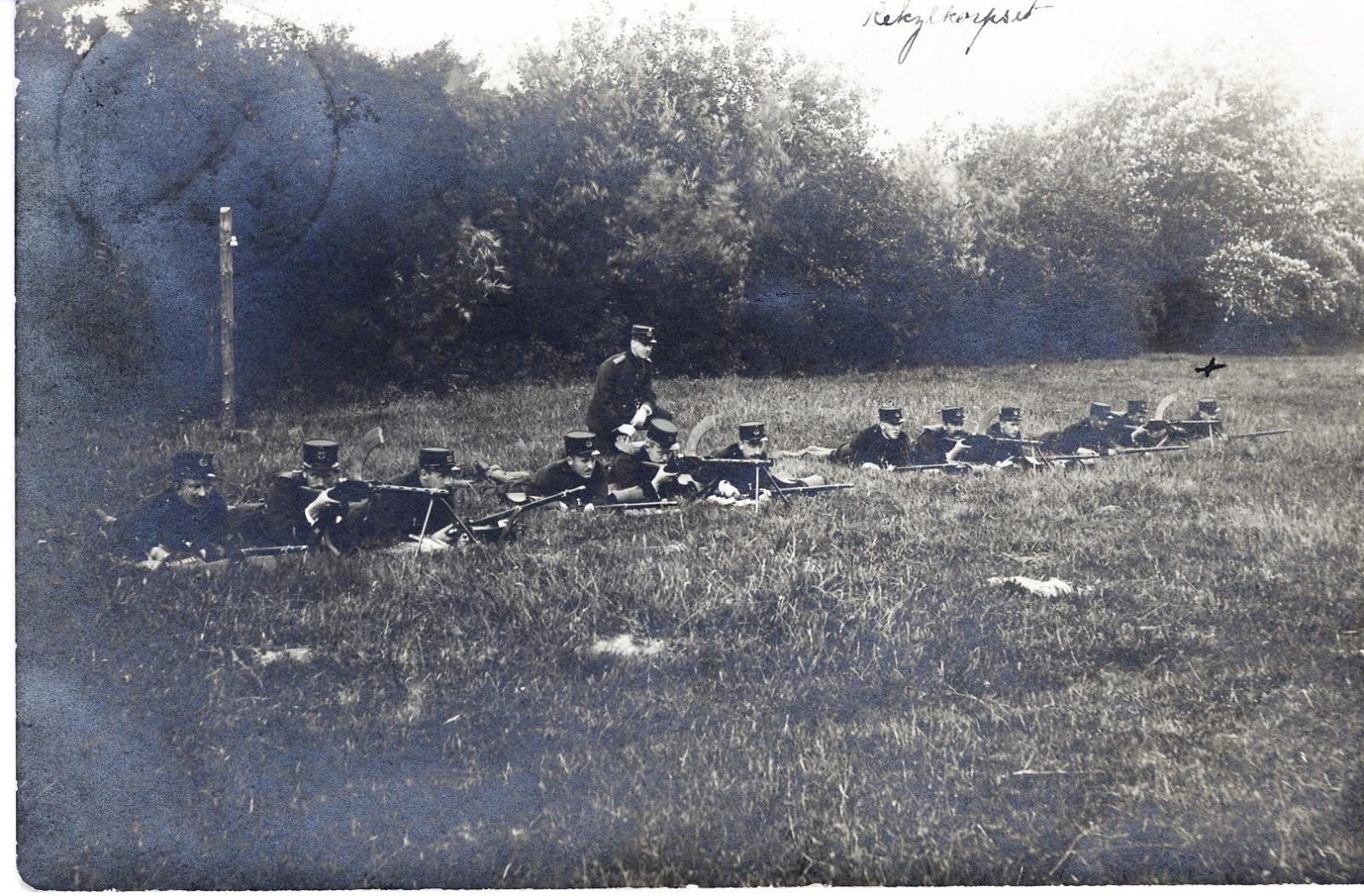A Tough Nut to Crack
Some 105 years ago. The Danish Royal Life Guard (Den Kongelige Livgarde) Musical Corps, 13-15 June 1919, pictured just after the Great War.
A proud regiment of a proud military, the Danish Army had gone hard in the Great War to protect its neutrality, having just fought Germany in 1864 and the Brits in 1807. This meant mobilizing 52,000 reserves and new drafts to add to the professional 13,000-man Army and building the 23 km-long Tunestillingen line of defenses near Copenhagen.
At its height, the Danes had 65,000 men under arms in 15 infantry (Livgarde and 1st-14th) regiments, 4 horse cavalry (Garderhusarregiment and 3rd-5th Dragoon) regiments, and five regiments of artillery. Local firearms concerns were sufficient to keep the force armed with Madsen machine guns and Krag rifles. Some 128 Krupp-made M.1902 75mm field guns were on hand while larger 15cm howitzers were ordered during the conflict from Bofors in nearby neutral Sweden.
Sure, even this enlarged Danish force probably would not have halted the Kaiser had he wanted to march north, but then again he never had a couple of extra Army corps on hand during WWI, did he?
Post-war, the Danish Army was demobilized to 15,000~ authorized (30,000 mobilized) and the Tunestillingen was scrapped. Only a handful of the Bofors howitzers delivered.
The liberal government of Denmark in 1939 decided to go the other way when another World War came, furloughing the Army until it contained just a 2,000-man regular cadre (including the guards units) and about 6,600 conscripts on their 11-month national service orders.
And you see what good that did.

